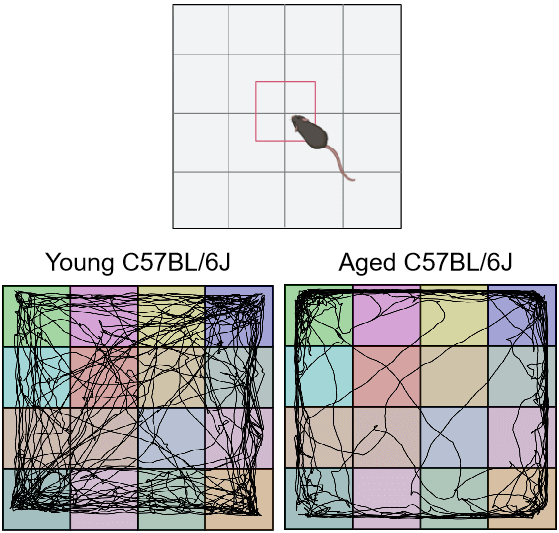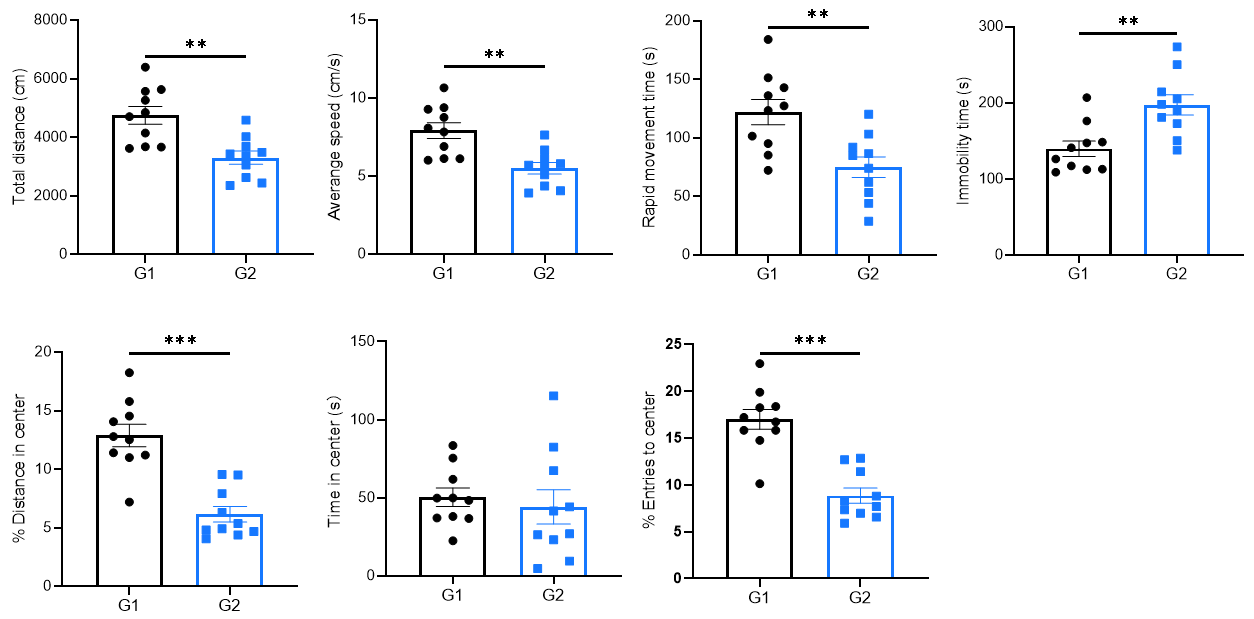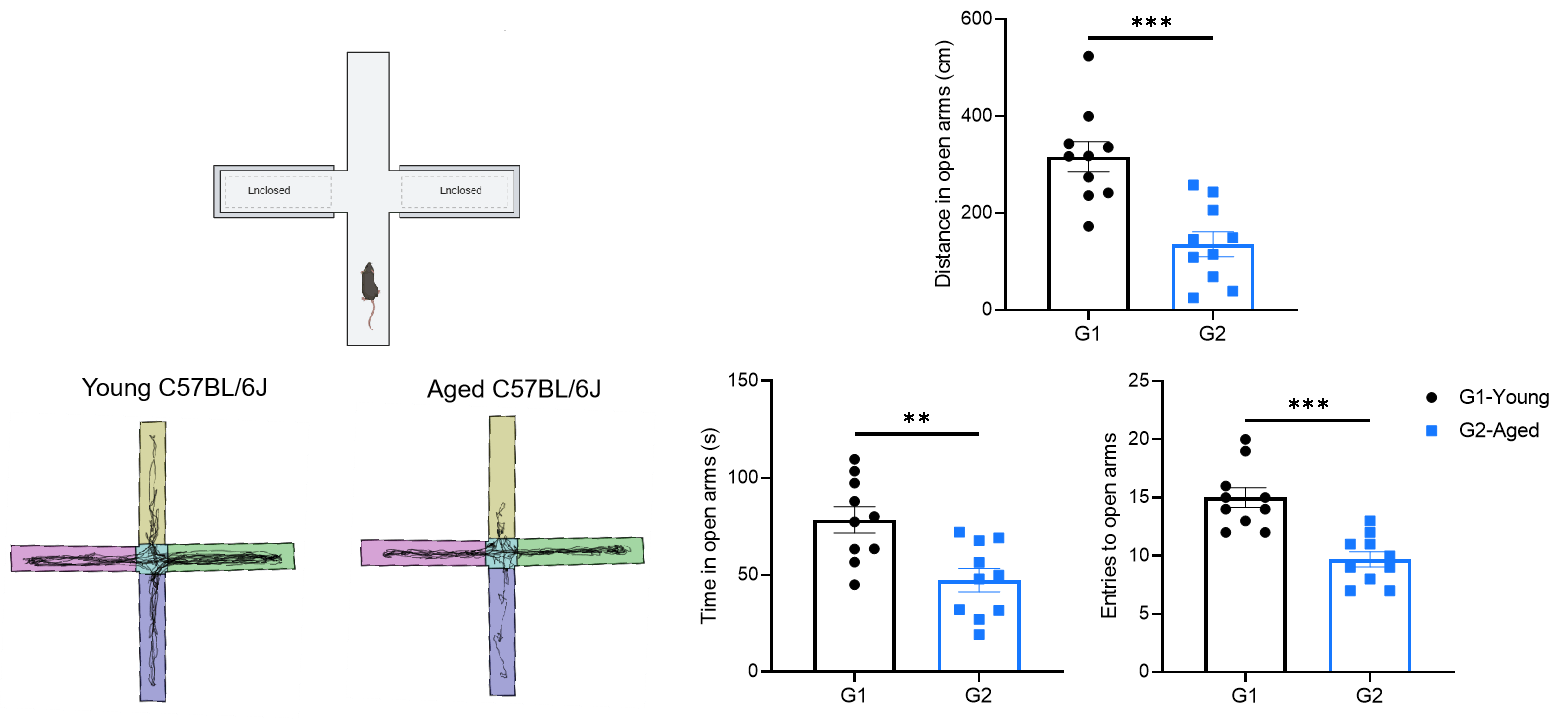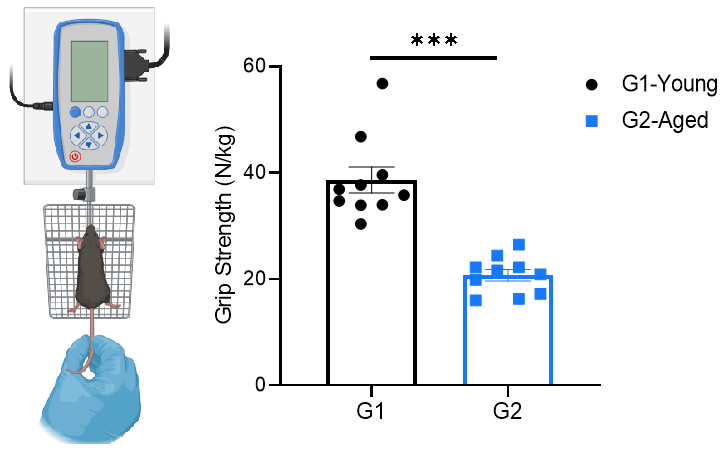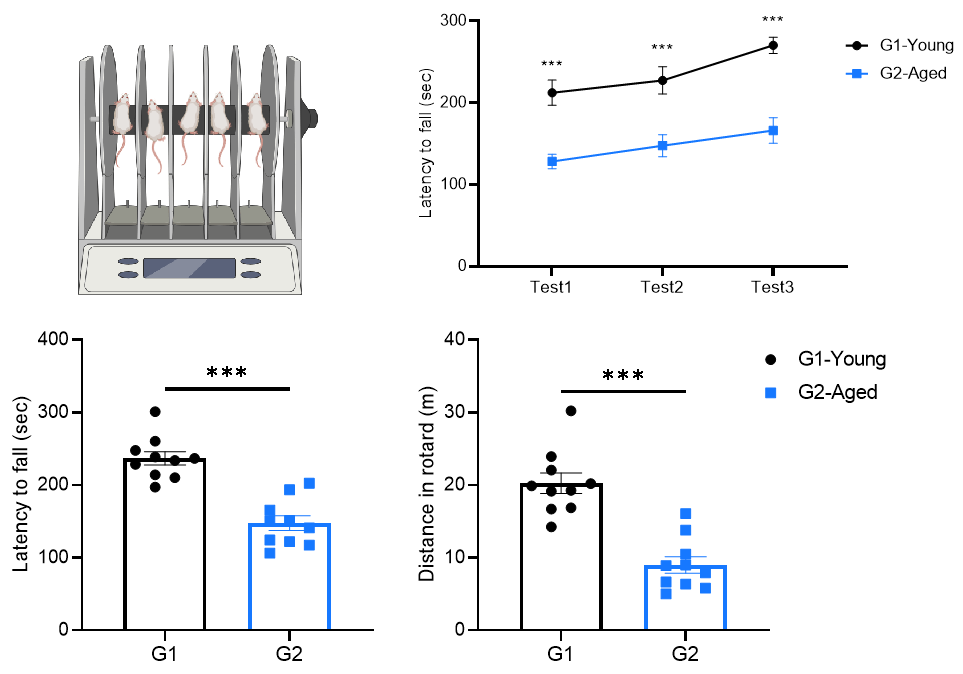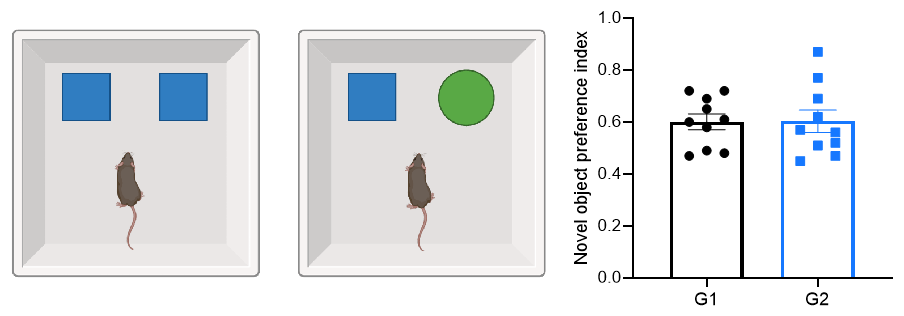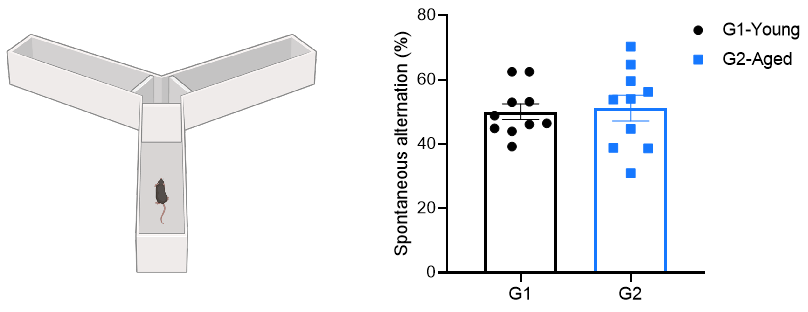Results
Behavior test of aged C57BL/6J mice
The open field test of Aged and Young C57BL/6J mice. Aged C57BL/6J mice (18 months, n=10) exhibited significantly reduced locomotor activity in the open field test (OFT) compared to young controls (8 weeks, n=10), including decreased total distance, average speed, and rapid movement time, along with increased immobility time. Additionally, aged mice showed lower center distance ratio and fewer center entries, suggesting reduced locomotor performance, anxiety-like and depressive-like behaviors. Data were presented as mean ± SEM; significance was determined by t-test (*p < 0.05, **p < 0.01, *p < 0.001).
Notes:Young:8-9 weeks, male; Old:18 months, male
Elevated plus maze of Aged and Young C57BL/6 mice. In the elevated plus maze (EPM), aged C57BL/6J mice (18 months, n=10) displayed significantly reduced distance moved, open-arm dwell time, and open-arm entries compared to young controls (8 weeks, n=10), indicating heightened anxiety-like behavior. Data were showed as mean ± SEM. t-test was used. * p < 0.05, ** p < 0.01, *** p < 0.001.
Notes:Young:8-9 weeks, male; Old:18 months, male
Grip strength test (GST) of Aged and Young C57BL/6J. Aged C57BL/6J mice (18 months, n=10) exhibited significantly reduced forelimb grip strength compared to young controls (8 weeks, n=10) in the grip strength test, indicating age-related muscular strength decline. Data were showed as mean ± SEM. t-test was used. * p < 0.05, ** p < 0.01, *** p < 0.001.
Rotarod test of Aged and Young C57BL/6J mice. Aged C57BL/6J mice (18 months, n=10) displayed significantly shorter fall latency and reduced rotarod endurance compared to young controls (8 weeks, n=10), indicating impaired motor coordination and locomotor performance. Data were showed as mean ± SEM. * p < 0.05, ** p < 0.01, *** p < 0.001.
Notes:Young:8-9 weeks, male; Old:18 months, male
- Novel object recognition (NOR)
Novel object recognition (NOR) of Aged and Young C57BL/6J mice. In the novel object recognition (NOR) test, aged C57BL/6J mice (18 months, n=10) showed comparable novel object preference to young controls (8 weeks, n=10), suggesting that learning memory is not impaired in aged C57BL/6J (G2) mice. Data were showed as mean ± SEM. t-test was used. * p < 0.05, ** p < 0.01, *** p < 0.001.
Notes:Young:8-9 weeks, male; Old:18 months, male
Y-maze of Aged and Young C57BL/6J mice. In the Y maze test, aged C57BL/6J mice (18 months, n=10, G2) showed similar spontaneous alternation to young controls (8 weeks, n=10), indicating intact working memory of aged mice. Data were showed as mean ± SEM. t-test was used. * p < 0.05, ** p < 0.01, *** p < 0.001.


